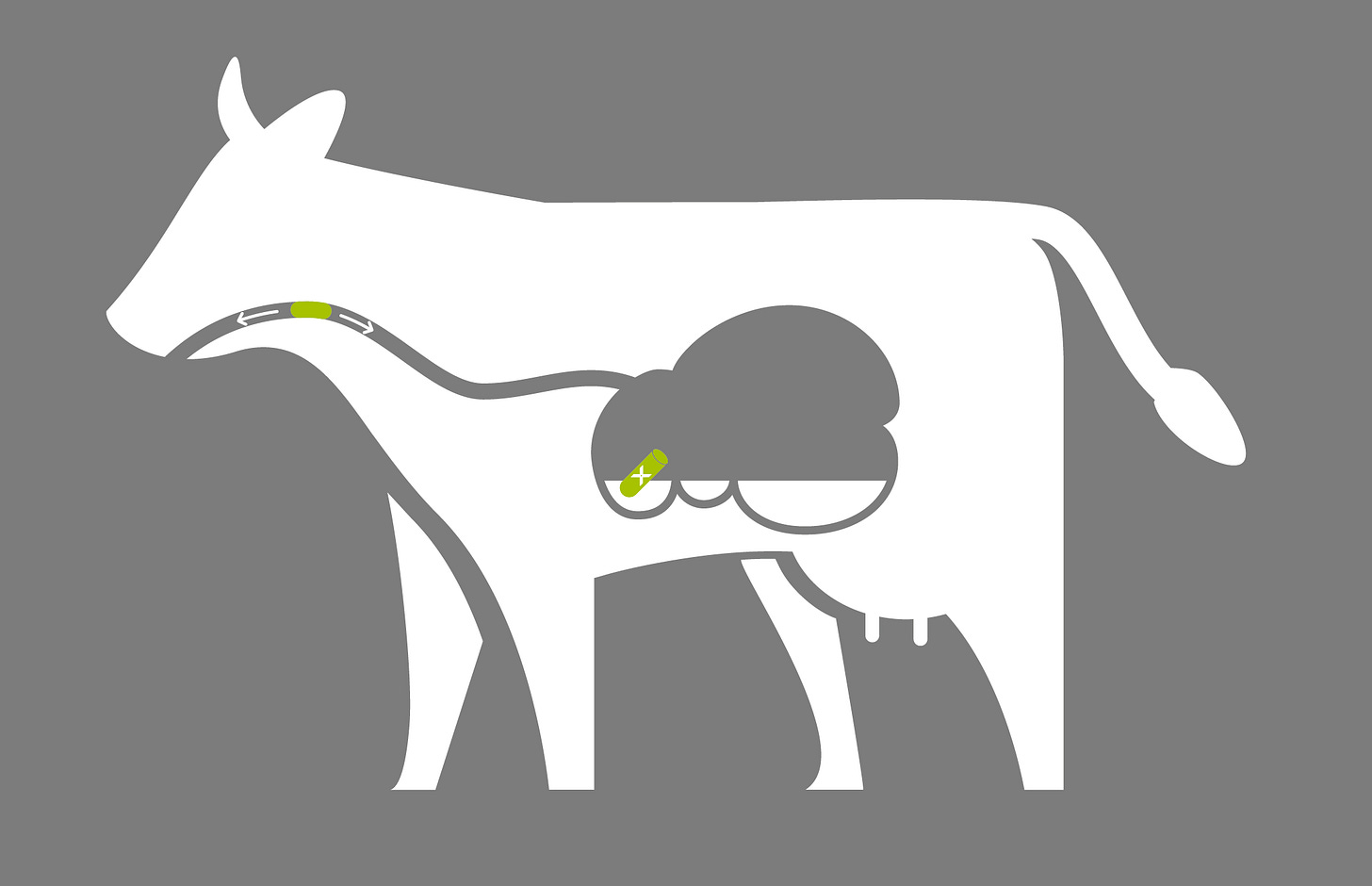In case you missed it … rumen bolus company adds rumination monitoring feature
Plus, how far you can fly a drone on a farm
A rumen bolus that could already track a cow’s inner body temperature and her movement can now also detect rumination. smaXtec calls the new feature of its bolus TruRumi technology. The company claims that adding rumination monitoring to its technology’s skill set will allow it to detect the onset of estrus, mastitis, displaced abomasum, calving and milk fever even earlier than before.

Source: smaXtec websiteThe company’s bolus is designed to be positioned inside the reticulum of a cow to measure the number and duration of rumen contractions. It claims the technology can detect cow events before visual symptoms are present – in some instances up to four days sooner.
Read more here.
Virginia Tech Extension details its use of drones with livestock
Virginia Tech Extension educators updated farmers and ranchers about their use of drones for livestock operations at the virtual 2020 Kentland Field Day this week.
Pulaski County Extension Agent Morgan Paulette said the extension group has been testing a quadcopter drone that cost $500. They’ve found the drones could be most useful to producers for basic tasks.
“We’ve been using it as a scout on the farm to check animals, check fences, check waterers. We actually used one just here a few weeks ago to assess some damage to some cropland.” Paulette said.
Extension educator Wes Gwaltney said he was surprised how user-friendly drones have become.
“When I first started using drones I was really apprehensive about damaging them because they're expensive, even $500 is expensive,” he said. “I'll be honest, when they first started coming out I was scared to fly them because I was afraid I was going to wreck one.”
The educators reported that the typical range of an affordable drone is quite far. The ability to track them in the sky is more limiting than their range of communication ability.
“Radio transmission limitation is probably not what's going to limit you. It’s going to be your ability to visually track the drone,” Gwaltney said.
They found that keeping a visual on the drone was possible a quarter to a half a mile away, depending on the color of the drone and current sky conditions. Visual flight is required for basic, legal drone use. They reminded users that to use one on a farm – someone on the farm must receive a remote pilot certificate from the FFA.
“We did learn that if you have someone on your farm who has a license, and you don't have a license, you can still fly legally, as long as that person is with you, watching you and can take the controls if something goes wrong,” Gwaltney said.
5,000 robots sold equals discounts and specials for farmers
Lely announced a special this week to celebrate the installation of its 5,000th robot in North America. Qualified buyers who install new robots before Dec. 4, 2020, will receive $15,000 in free upgrades OR no interest, no payments for five months.
Read more here.
Early adopter of predictive intelligence sees higher preg-rate and longer VWPs
One of Connecterra’s early adopters of its Ida digital assistant and artificial intelligence in the U.S. recently reported on some of the benefits he’s seen since installing the company’s technology. Alex Neuenschwander milks nearly a 1,000 cows in Indiana. Since installing the company’s activity collars and predictive intelligence software on his farm in 2018, the dairy has seen an increase in pregnancy rate “from the low 20 percent range to 30 percent.” He’s also pushed the herd’s standard voluntary waiting period from 60 to 75 days in milk. He’s still using timed AI programs to breed his herd, but he says the system “is good enough” that he would consider not using them, if need be.
“As the dairy industry moves forward, that’s something we might have to do anyway – have less hormone reliance.”
— Dairyman Alex Neuenschwander
Read more here.
Connecterra also announced a new feature this week. Now when its digital assistant Ida identifies a cow as potentially sick, users can mark “maybe” in the system’s smartphone app and then track the cow for up to 7 days.
Because the system claims to predict illness two days before outward symptoms are present, the new feature allows farmers to better watch cows that may not look ill when the alert is sent. The Ida system utilizes user feedback to further sharpen its artificial intelligence, so the new wait-and-see feature should also provide better feedback to the technology’s algorithms.
Read more here.
A lesson in the cost of lost pregnancies
Inline milk sensor SomaDetect posted an article this week about the manual costs of confirming pregnancies throughout a cow’s gestation. The company claims its inline milk sensor technology can help producers detect open cows, provide early pregnancy indication and project the risk of pregnancy loss. In one cited example, the company calculated that automating pregnancy detection could help save a 3,500-cow dairy up to $247,500 a year by catching aborted pregnancies well before dry off.
Read more here.
I don’t know that I’d call this tech, but it’s a fascinating home milk delivery system on a bike and a fun way to close out this week’s newsletter.
If you haven’t already, don’t forget to register for the Global Dairy Tech Start-up Spotlight. The 90-minute virtual meeting will be held next Thursday, Oct. 1. To get registered for the event, go to dairystartupspotlight.com






